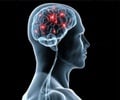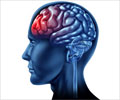Scientists succeeded in deciphering a cellular mechanism leading to the desynchronization of neural networks and also in correcting this organizational defect in an adult animal model, thereby suppressing abnormal behaviours associated with schizophrenia.

‘Desynchronization of neurons may be the cause of its neuropsychiatric symptoms, such as memory disorders, hyperactivity, schizophrenia or hallucinatory phenomena. ’





"What happens in the brains of patients suffering from these behavioural changes characteristic of the disease? Our aim was not only to understand how their neural networks dysfunctions, but also to figure out whether it was possible to restore their normal functioning, especially in adults," explains Alan Carleton, professor in the Department of Basic Neurosciences at the Faculty of Medicine of the UNIGE, who directed this work. A question of networks
The Geneva neuroscientists chose to focus on neural networks of the hippocampus, a brain structure notably involved in memory. They studied a mouse model that reproduces the genetic alteration of DiGeorge syndrome as well as some behavioural changes associated with schizophrenia. In the hippocampus of a control mouse, the thousands of neurons that make up the network coordinate according to a very precise sequence of activity, which is dynamic in time and synchronized. However, in the neural networks of their mouse models, the scientists observed something completely different: the neurons showed the same level of activity as in control animals, but without any coordination, as if these cells were incapable of communicating properly with each other. "The organization and synchronization of neural networks is achieved through the intervention of subpopulations of inhibitory neurons, including parvalbumin neurons,» says Carleton. "However, in this animal model of schizophrenia, these neurons are much less active. Without proper inhibition to control and structure the electrical activity of other neurons in the network, anarchy rules. "
Restoring neural order, even in adulthood
The second step was to try to restore the synchronization necessary for neural networks to function properly. To do this, the scientists specifically targeted the parvalbumin neurons of the hippocampus. By stimulating these dysfunctional inhibitory neurons, they managed to restore the sequential organization and normal functioning of neural networks. Similarly, they were able to correct some behavioural abnormalities in these schizophrenia mouse models, suppressing both hyperactivity and memory deficit.
Advertisement
Current treatments for schizophrenia are primarily based on the administration of antipsychotic drugs targeting the dopaminergic and serotoninergic systems. In spite of their positive effect on hallucinatory symptoms, they remain less effective to improve many symptoms, and in particular cognitive symptoms. An approach aiming at overcoming the defect of parvalbumin neurons to increase their inhibitory effect therefore appears to be a promising target; nevertheless, time will be needed before a treatment based on this strategy is developed. The neuroscientists now want to confirm their results by extending their research to schizophrenia resulting from genetic alterations different from those of DiGeorge syndrome.















